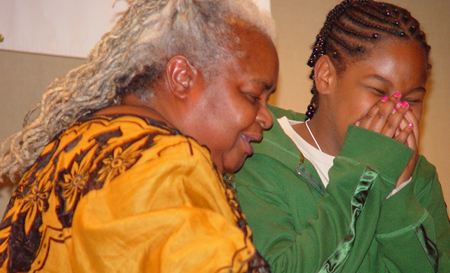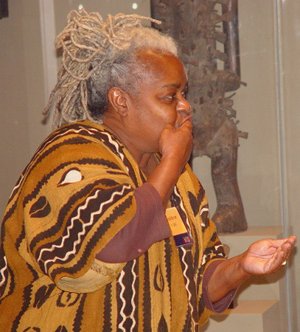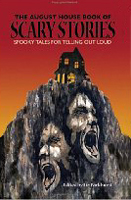For me, storytelling is a wonderful thing, very precious to my soul because I really feel joy seeing that I can influence in good people souls and lives.
Viewing: Blog Posts Tagged with: Storytelling in Libraries, Most Recent at Top [Help]
Results 1 - 9 of 9
Blog: The Art of Storytelling with Children (Login to Add to MyJacketFlap)
JacketFlap tags: International Storytelling, Storytelling in Libraries, Magical Child, Teaching Children, Library Reading, European Storytelling, Camp Storytelling, Extra Articles, Coaching Storytelling, Add a tag
Blog: The Art of Storytelling with Children (Login to Add to MyJacketFlap)
JacketFlap tags: Literacy, Storytelling in Schools, Extra Articles, Storytelling in Libraries, Teaching Children, West Coast Storytelling, Canadian Storytellers, Language Literacy, Add a tag
or Teaching Without Pressuring the Teacher to Teach or the Child to Learn

Stories and songs are natural teachers and create natural paths to literacy.
Stir a child’s imagination with stories, songs, and poems, and you feed the roots of learning. Once memorized, a single sentence from a piece of prose, a song, or a poem, creates a model for many hundreds of sentences to come.
The linguistic significance of these models looks deceptively simple, but every sentence or stanza, no matter how short, is packed with grammatical and syntactic models. Let’s take a closer look at one simple stanza from my song, Bug in My Hand:
There’s a bug in my hand,
and it climbed on my nose,
and it played a bass drum,
bum, bum, bum, bum.
Here are a few of the grammatical (syntactic) structures in this one short stanza.
there’s: non-referential ‘there’ and subject-predicate agreement
a bug: noun phrase with singular indefinite article ‘a’
in my hand: prepositional phrase, including possessive ‘my’
and: coordinating conjunction
it: referential pronoun in place of the noun ‘bug’
on my nose: prepositional phrase with parallel structure to first prepositional phrase
a bass drum: noun phrase with adjective-noun combination
These are only a few of the syntactical structures that have been used to build this simple stanza. Memorized in a state of play, every one of the patterns illustrated above and those not mentioned become models for linguistic development and literacy in the future.
What a wonderful tool, especially when working with reluctant learners. (See my blog entry: On reluctant learners)
Reluctant learners are afraid, moody, and often angry. So as not to fail, they don’t try. They play every trick in the book, from daydreaming and disrupting class to acting out. Eventually, if not helped, they may turn into problem kids.
But what if a teacher could turn these reluctant learners around? What if a teacher could teach these reluctant learners without them knowing they were being taught?
Stories, songs, and poems are the key. And they not only work for reluctant learners. They also help to reinforce proper syntax in the minds of even the best of students.
I often talk to educators about ‘giving the gift’. Excite young people to the wonders of stories, songs, and poems and you will be giving everyone of them a ‘gift’, the ‘gift’ of literacy, a ‘gift’ that lasts a lifetime.
Max Tell, a.k.a. Robert Stelmach, the International Troubadour, sings and tells stories from the heart. http://maxtell.ca/content/
Blog: The Art of Storytelling with Children (Login to Add to MyJacketFlap)
JacketFlap tags: African American, Storytelling in Schools, Storytelling in Libraries, Magical Child, Storytelling for Children, Teaching Children, Midwest Storytelling, Minnesota Storytellers, Beginning Storytelling, Storytelling Techniques, Add a tag
Press Play to hear Nothando Zulu speaking on participation on the Art of Storytelling with Brother Wolf.
Nothando Zulu writes..
Participation, Participation, Participation...
I began telling stories as a member of an acting ensemble in 1976, presenting storytelling as a major part of our repertoire. We worked primarily in park and recreation centers and schools. As members moved away or went into other fields, we evolved into‐ and I cofounded ‐ the Black Storytellers Alliance (BSA) in direct response to the demand for storytelling to deliver the inspirational and cultural lessons embodied in our stories.
Early on I encouraged members of the audience to share the storytelling space by becoming a part of the story and one of the characters in the story. On many occasions, I was unable to use all the audience members who wanted to participate! It was wonderful to have so many trying to join in the storytelling process and reinforces oral storytelling as a powerful medium. Therefore, I decided to use a kind of birthday system for who I would choose:
• I start with participatory stories in mind
• I ask the audience who had a birthday in the prior month
• Depending of the number of positive responses, I decide on the story to
present.
One example is Ananse and His Six Children. If I receive more than six positive responses, I make some twins or triplets and sometimes quadruplets! I may use the age of the participant to determine the specific role of each participant. In the story Ananse and The Moss Covered Rock, Little Miss Bush Deer has to be at least a third grader, to understand and answer “No” to each of the questions asked by the Ananse character. When the participant is younger, (s)he may miss the concept and answer in the affirmative.
Audience participation is fun and most effective when the storyteller has extensive experience with audience inclusion.
Breif Bio
Nothando Zulu is a Master storyteller who has been sharing stories with audiences for over 30 years. She shares stories that entertain, educate, motivate and inspire. She has performed at many venues locally, nationally and internationally. She draws from an extensive resource of colorful, often funny characters whose antics and follies leave audiences pondering their own life’s lessons. As Director of Black Storytellers Alliance, she and her husband with the help of the Board of Directors has produced a three-day storytelling festival celebrating the art of Black storytelling called, “Signifyin’ & Testifyin’” (now in the 17th year). Nothando is also a wife, mother, grandmother, community and political activist who believes in the power of stories.
Read more about Nothando Zulu on her website http://www.yourfavoritestorytellers.org/nothando-zulu.htm
and on the Black Storytellers Alliance Website http://www.blackstorytellers.com/
Blog: The Art of Storytelling with Children (Login to Add to MyJacketFlap)
JacketFlap tags: Storytelling in Community, Street Storytelling, Storytelling in Schools, Singing and Storytelling, Storytelling in Libraries, Scary Storytelling, Storytelling in Ceremony, Add a tag
Would you like to be a part of a storytelling conference call that supports you in your use of storytelling? If so, then enter your name and email address and you will receive personal invitations to participate in The Art of Storytelling with Brother Wolf Conference call or anything else about the show…
| Name: | |
| Email: | |
| Share your thoughts on the call, connect with old time storytellers and ask questions to experts in the field. |
|
I will not share or give away your email address.
And don’t forget to subscribe by iTunes or your browser to the Art of Storytelling Podcast so you can get bi-weekly inspirations from Brother Wolf direct to your desktop.
Blog: The Art of Storytelling with Children (Login to Add to MyJacketFlap)
JacketFlap tags: Storytelling in Community, Street Storytelling, Storytelling in Schools, Add new tag, Singing and Storytelling, Storytelling in Libraries, Storytelling in Ceremony, Arts in Schools, Schools Programs, Midwest Storytelling, Add a tag
Your Feedback is important to the future of the show.
Participate now and directly influence the Art of Storytelling with Children.
Currently survey participants responses are coming from…
(One participant may check more then one choice.)
Professional Storyteller 43%
Educator 43%
Parent 41%
Storytelling Organizer 34%
Story Admirer 34%
Audience Member 31%
Writer of Children’s Stories 23%
Semi-professional Storyteller 20%
Librarian 18%
Amateur Storyteller 16%
Storytelling Coach 16%
Faith Based Storyteller 15%
This survey is still open - take your turn to influence the future of the Art of Storytelling with Children…
Fill out hte Listener Survey.
Loading…
Blog: The Art of Storytelling with Children (Login to Add to MyJacketFlap)
JacketFlap tags: Storytelling in Community, Street Storytelling, Storytelling in Schools, Add new tag, Singing and Storytelling, Storytelling in Libraries, Storytelling in Ceremony, Arts in Schools, Schools Programs, Midwest Storytelling, Literacy, Musings, Professional Development, African American, Press Release, Childrens Story, Brother Wolf, Healing Storytelling, Local Events, Episode List, Creating Success, Personal Narrative, Extra Articles, Festival Organizing, Artistic Marketing, Earth Storytelling, International Storytelling, Magical Child, Scary Storytelling, Coaching Storytelling, Parent Resources, Peace Storytelling, Digital Storytelling, Griot, Add a tag
Your Feedback is important to the future of the show.
Participate now and directly influence the Art of Storytelling with Children.
Currently survey participants responses are coming from…
(One participant may check more then one choice.)
Professional Storyteller 43%
Educator 43%
Parent 41%
Storytelling Organizer 34%
Story Admirer 34%
Audience Member 31%
Writer of Children’s Stories 23%
Semi-professional Storyteller 20%
Librarian 18%
Amateur Storyteller 16%
Storytelling Coach 16%
Faith Based Storyteller 15%
This survey is still open - take your turn to influence the future of the Art of Storytelling with Children…
Fill out hte Listener Survey.
Loading…
Blog: The Art of Storytelling with Children (Login to Add to MyJacketFlap)
JacketFlap tags: Literacy, Musings, Professional Development, African American, Press Release, Childrens Story, Brother Wolf, Storytelling in Community, Street Storytelling, Healing Storytelling, Storytelling in Schools, Local Events, Episode List, Creating Success, Personal Narrative, Extra Articles, Festival Organizing, Artistic Marketing, Earth Storytelling, International Storytelling, Singing and Storytelling, Storytelling in Libraries, Magical Child, Scary Storytelling, Coaching Storytelling, Storytelling in Ceremony, Parent Resources, Peace Storytelling, Arts in Schools, Schools Programs, Digital Storytelling, Griot, Midwest Storytelling, Add a tag
Your Feedback is important to the future of the show.
Participate now and directly influence the Art of Storytelling with Children.
Loading…
Blog: The Art of Storytelling with Children (Login to Add to MyJacketFlap)
JacketFlap tags: Storytelling in Community, Storytelling in Libraries, Scary Stroytelling, Scary storytelling, Add a tag
Thomas Freese writes…
I am looking forward to being on Eric’s “Art of Storytelling with Children Podcast” next week, on September 23, 8PM Eastern time. I’ve been a professional storyteller and author of ghost story books for over a decade in addition to my work as an art therapist and licensed professional counselor. Our topic will be “Why tell children scary ghost stories?” I have over a dozen storytelling programs that I perform for schools, libraries, festivals, churches and private parties. And several of those themed programs are ghost stories. I’ve collected both true ghost stories as well as authoring original fiction mysteries. Kids love storytelling and kids really love ghost stories!
I was fascinated with ghost stories since I was a middle school student. In fact, one of my favorite books, Strangely Enough, which I bought at a Scholastic Book Fair, is still in print and still available for kids at school. After reading it and questioning my Mom about real experiences with ghosts she related a tale of an encounter at her Aunt’s farm when out horse riding. I’ve been hooked on ghostly mysteries ever since.
Fast forward to my life in Kentucky where I was a volunteer singer at the historic 200 plus year Shaker village called Pleasant Hill, located near Harrodsburg in Mercer County. During my ten years singing I heard numerous stories of experiences with the Shaker spirits and I decided to take a stand, rescue the fact or folklore that would be lost oral accounts if no one else researched and recorded them. I interviewed over 60 employees and guests starting in 1998 and later (2005) published those first-hand tales in my Shaker Ghost Stories from Pleasant Hill, Kentucky. I found children of all ages fascinated with the stories of spirits who seemed to act very much in character with the once-living Shakers. Folks heard singing, shouting, stomping in the 1820 Meeting House. They saw Shaker-dressed figures on the old village pike.
As I performed my ghost stories program I included some true tales along with the fanciful entertaining fictional tales. I found kids no less interested in the true tales despite some of those seeming a bit less high-impact than fiction stories. I created a number of guitar songs to accompany my tales of witches, ghosts and other creatures. In live performances of mixed ages I noticed children mesmerized by true ghost stories.
In planning discussions with some teachers or librarians I was intrigued to see that some basically requested “the scarier the better” whereas others wanted assurances at least concerning the younger ages, say up to Kindergarten or first grade. I think a number of scary tales can be done successfully and without undue “trauma” at younger ages but the teller’s environment makes a difference. I sing a song to normalize the fear of ghostly stories at the beginning of my program. What I find fascinating also is that whatever the age of the audience, younger children through adult, one can find individuals sitting side by side of the same age where one is wide eyed with participatory “fear” and the other smirks and says, “That’s not scary enough!”
Please join me for this Podcast as I consider the topic with several professional hats, ghost story author, storyteller and professional counselor and therapist. My credentials include BA Psychology, MA Expressive Therapies, LPCC (Licensed Professional Clinical Counselor, ATR-BC (Art Therapist Board Certified). In addition, I have worked as a Psychic Counselor and I can tell you that some things kids see are not “just their imagination”! Check out my books, first one mentioned above, and also Fog Swirler and 11 Other Ghost Stories and just released Strange and Wonderful Things: a Collection of Ghost Stories with Special Appearances by Witches and Other Bizarre Creatures. [email protected]
Blog: The Art of Storytelling with Children (Login to Add to MyJacketFlap)
JacketFlap tags: Parental Resources, Singing and Storytelling, Storytelling in Libraries, reading, Storytelling, Peace, Literacy, School, teachers, singing, Storytelling in Schools, The Art of Storytelling with Children Podcast, Creating Success, Artistic Marketing, Add a tag
This Upcoming Tuesday - June 10th - - 8PM ET– Mary Jo Huff speaks about early literacy begins with rhythm rhyme & story time on the Art of Storytelling with Children.
Mary Jo writes…
Language is critical for literacy development and storytelling creates an interactive bridge. Music, repeated phrases, and actions provide connections and invite participation by children when they become part of the storytelling event.
Working in schools demands that the storyteller is tuned into the state literacy standards. Storytelling connects many types of standards but I am only concentrating on the literacy connection. A good story challenges a child’s auditory, visual, and kinesthetic skills along with a phonemic awareness.
Performing in schools as a storyteller gives a teller the opportunity to address some reading readiness components such as repetition, retelling, rhyming and sequencing. When teachers are aware of what the stories have to offer they are amazed at the children’s reaction. Children develop their oral language skills by learning to tell and retell stories. They learn about their world, other cultures, visual imagery, moral and social issues and they increase listening skills.
Literacy standards connections to look for when telling stories for children:
• Phonological Awareness
• Understanding Stories
• Book Awareness
• Comprehension
• Word Awareness
• Story Enjoyment
Mountains of information are available for review and it can be mind boggling. Check out these organizations for documentation of literacy standards and review for connections to your type of storytelling.
• International Reading Association
• National Council of Teachers of English
• National Association for the Education of Young Children
Play with the sounds of language using songs, rhymes, chants and stories. Get excited about what you do. This life of mine is a passion and I work at it everyday in one way or another. Over the years I have been successful because I spent 35 years in the trenches with young children and also attended numerous conferences and developed a love for my life. I rely on my experiences to connect my storytelling to the world I live in and to share my experiences with anyone who will listen!
More about Mary Jo
I have 35 years as an Early Childhood Educator and 20 years as a storyteller. I believe in my heart that children who listen to stories develop a great vocabulary and understanding of their world. I used storytelling in the classroom and began visiting schools, libraries and doing workshops for teachers and librarians. In this period of time I have been in all but 7 states and visited with thousands of children and adults. Children need excitement, music, props and I like puppets with my storytelling. I am not a puppeteer I just play with puppets and I play with story.
Today I work as an author, storyteller, consultant, teaching artist and granny-on-the-go! I am a good traveler and my fluff goes with me wherever I go to tell stories. Children are hungry to hear a good told story and they connect especially when there is a little rhythm and rhyme. I have 7 books published and working on a couple at this moment along with 3 CDs and my favorite a new DVD called “Fairy Tales, Fantasy, and Storytellin’ Fun!.








For me, storytelling is a wonderful thing, very precious to my soul because I really feel joy seeing that I can influence in good people souls and lives.